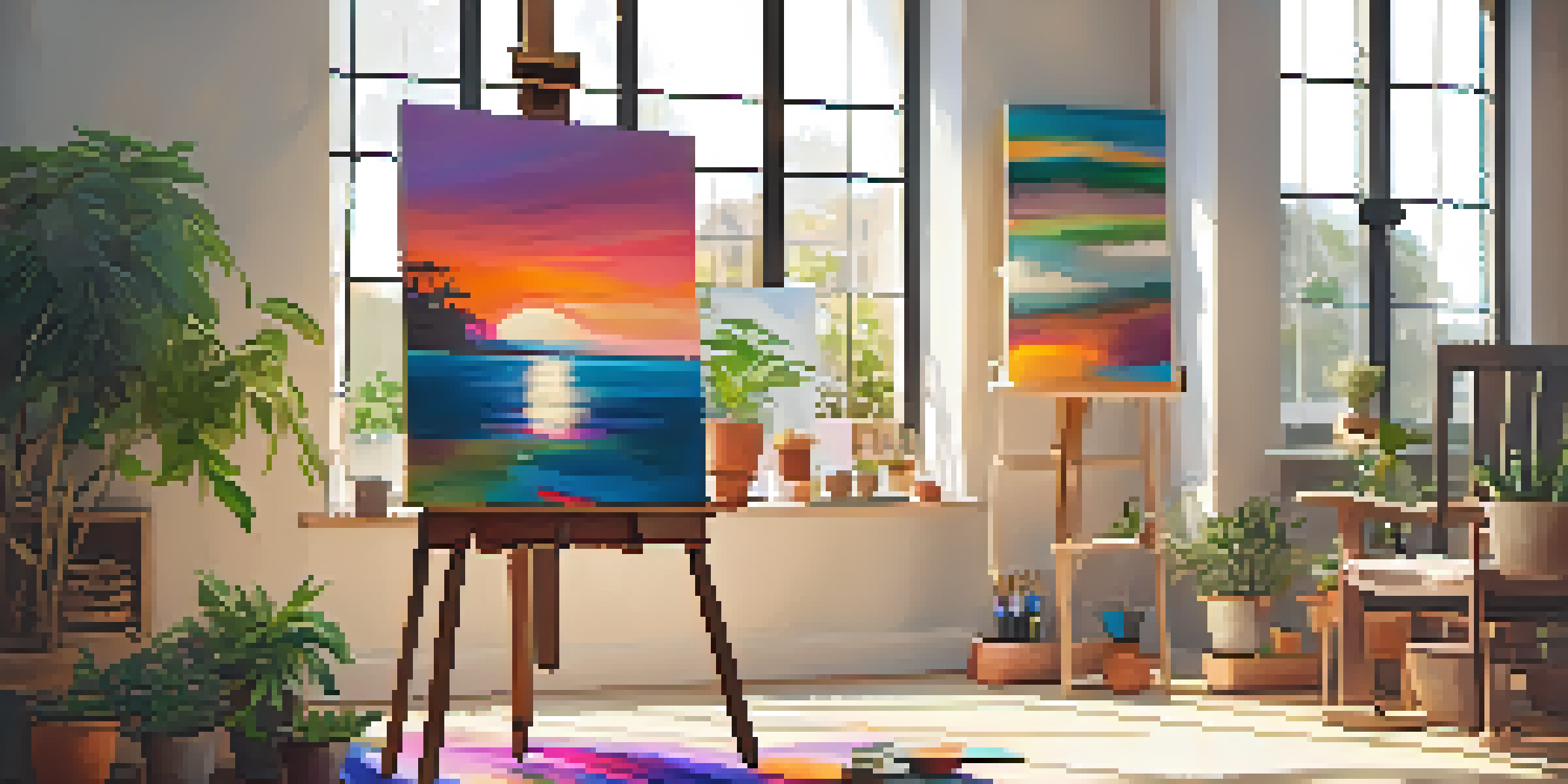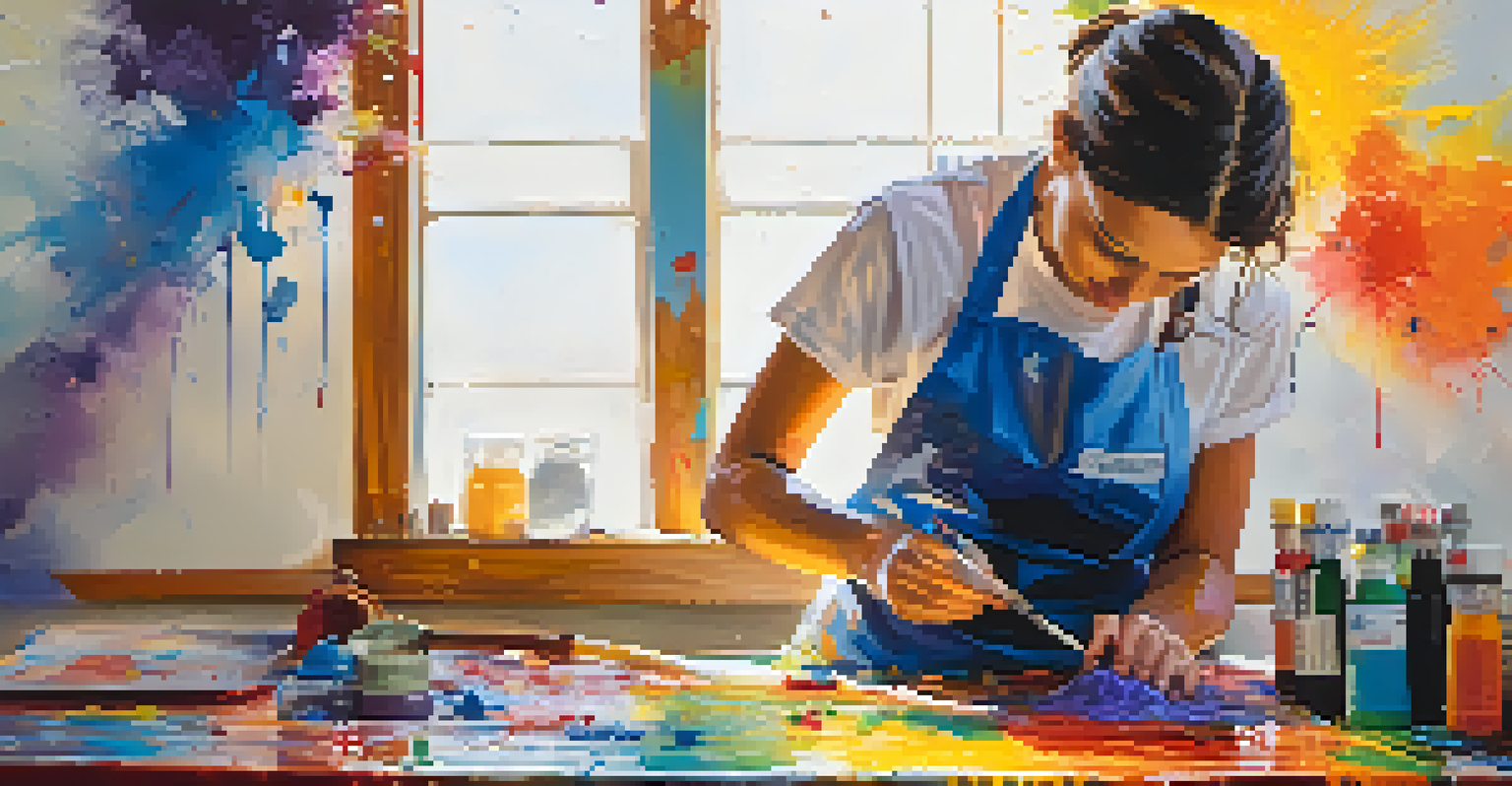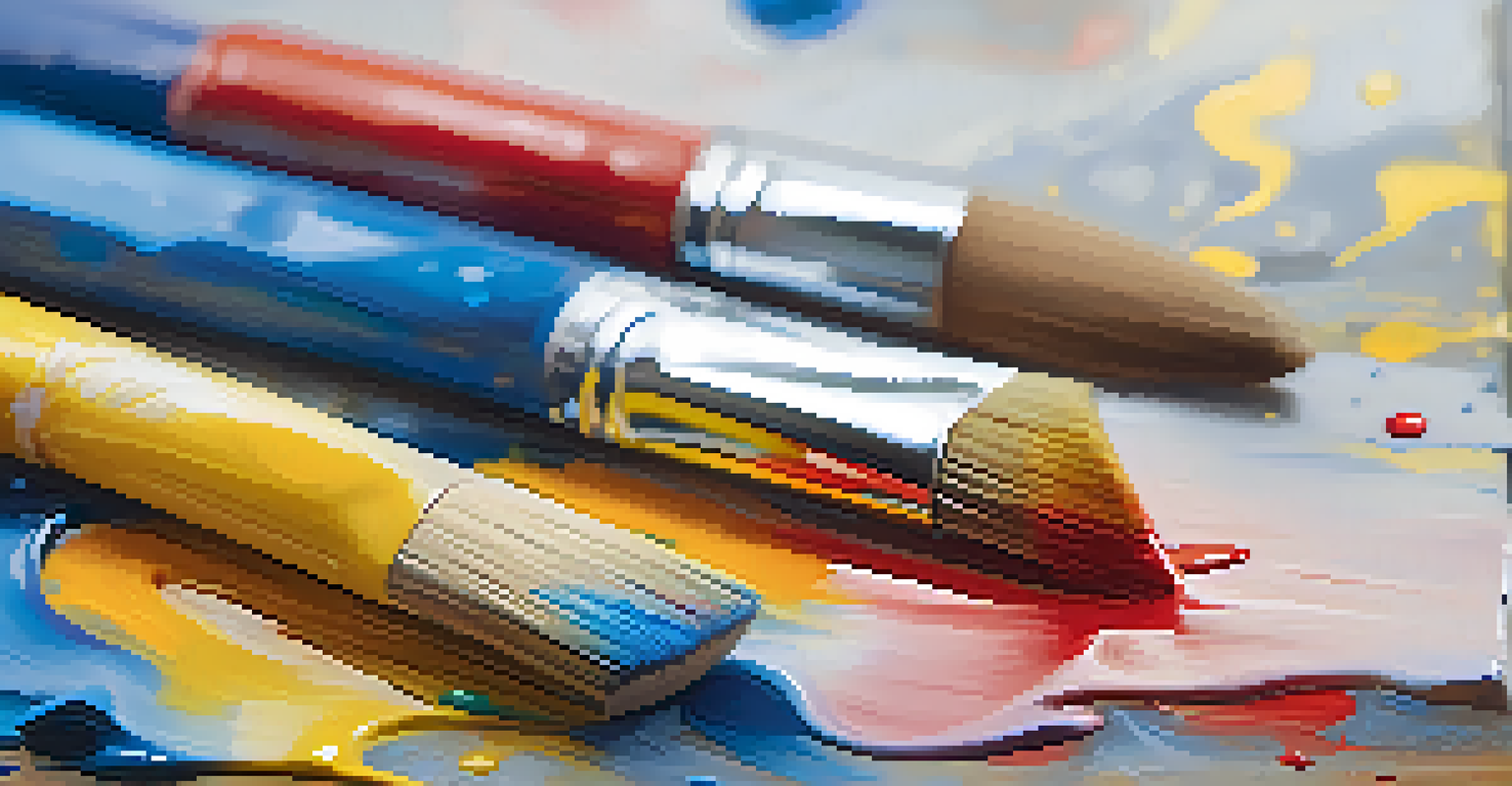Using Acrylics in Art Therapy: Techniques for Self-Discovery

Understanding Art Therapy and Its Benefits
Art therapy combines artistic expression with therapeutic practices, helping individuals explore emotions and thoughts. By engaging in creative activities, people can communicate feelings that might be difficult to express verbally. This form of therapy is particularly effective for those dealing with anxiety, trauma, or depression.
Art is not freedom from discipline, but disciplined freedom.
Acrylic paints, with their vibrant colors and quick-drying properties, make them ideal for art therapy sessions. They allow for spontaneity and experimentation, which can lead to profound moments of self-discovery. Whether you're a seasoned artist or a complete beginner, acrylics provide a versatile medium to express your innermost thoughts.
In art therapy, the process of creation is often more important than the final product. Participants are encouraged to focus on their feelings during the act of painting, leading to cathartic breakthroughs. This approach can foster deeper insights and a better understanding of oneself.
Choosing the Right Acrylic Supplies
Selecting quality acrylic paints is crucial for a fulfilling art therapy experience. Look for paints that offer a wide range of colors and are easy to blend, as this can enhance your creative journey. Additionally, consider the type of brushes and canvases you'll use; each can alter your painting experience significantly.

Affordable and accessible, acrylics are perfect for art therapy, making it easier for anyone to dive into creative exploration. You don't need to invest heavily in supplies to start painting. A basic set of paints, a few brushes, and some canvas or paper can go a long way in helping you express yourself.
Art Therapy Enhances Emotional Expression
Art therapy allows individuals to explore and communicate their emotions through creative activities, fostering self-discovery.
Remember, the goal is not perfection but exploration. It's about finding joy in the process and discovering what colors and techniques resonate with you emotionally. This approach can help reduce the pressure often associated with creating art.
Techniques for Emotional Expression with Acrylics
One effective technique is intuitive painting, where you allow your feelings to guide your brushstrokes. Start by applying colors that resonate with your current mood, then let your brush move freely across the canvas. This method encourages spontaneity and can reveal hidden emotions as you paint.
The painter tries to master the art of expressing the emotions of a moment; the truth is, it is the moment that masters the painter.
Another approach is to use colors symbolically; for instance, blue might represent sadness while yellow symbolizes happiness. By consciously choosing colors that reflect your emotions, you create a visual representation of your inner state. This can lead to powerful self-reflection and insights into your feelings.
Layering techniques can also be beneficial. Start with a base layer of color and gradually add more details or contrasting colors. This process mimics the layers of our emotions and experiences, allowing you to uncover deeper aspects of yourself as you paint.
Exploring Abstract Art for Self-Discovery
Abstract art focuses on shapes, colors, and forms rather than recognizable subjects. This style can be incredibly liberating in art therapy, as it encourages you to express emotions without the constraints of realism. You can explore feelings that may be too complex to articulate in words.
Using acrylics, you can experiment with various techniques like pouring, splattering, or scraping to create unique textures and forms. The unpredictability of these methods can mirror the unpredictability of emotions, allowing you to explore your feelings in a raw and honest way. This unfiltered expression can lead to significant insights.
Choosing Quality Acrylic Supplies Matters
Selecting the right acrylic paints and tools enhances the art therapy experience, making creative exploration accessible and enjoyable.
Creating abstract art can also foster a sense of freedom and release. When you let go of the need to create something 'beautiful' or 'perfect,' you open yourself up to authenticity. This can be a transformative experience, helping you to embrace your true self.
Mindfulness Techniques in Acrylic Painting
Incorporating mindfulness into your painting practice can deepen your self-discovery. Start by taking a few moments to breathe deeply and center your thoughts before you begin painting. This helps create a calm and focused mindset, allowing for a more profound connection with your feelings.
As you paint, pay close attention to the colors, textures, and movements of your brush. Focusing on these sensory aspects can keep you grounded in the present moment, making the experience more meditative. This mindfulness can enhance your emotional awareness and lead to valuable insights.
Consider setting intentions for your painting session. Whether it's to explore a specific emotion or simply to enjoy the process, having a clear intention can guide your creative exploration. This practice not only fosters self-awareness but also reinforces your connection to your art.
Reflecting on Your Art for Deeper Insights
After completing a painting, take time to reflect on the emotions and thoughts that arose during the process. Ask yourself questions like, 'How did this piece make me feel?' and 'What colors did I gravitate towards and why?' This reflection can deepen your understanding of your emotional landscape.
Keeping an art journal alongside your paintings can also be beneficial. Document your feelings, thoughts, and insights related to each piece you create. This practice can help track your emotional journey over time, revealing patterns and growth.
Mindfulness Deepens Artistic Insight
Incorporating mindfulness techniques during painting can enhance emotional awareness and lead to valuable insights about oneself.
Sharing your artwork with others, whether in a supportive group or with friends, can provide additional perspectives on your creative process. Often, others can see things in your work that you might overlook, enhancing your understanding of your emotions and experiences.
Creating a Supportive Environment for Art Therapy
Your environment plays a significant role in your art therapy experience. Aim to create a space that feels comfortable and inspiring, with good lighting and minimal distractions. Surrounding yourself with art supplies you love can also enhance your creativity and motivate you to engage in the process.
Consider incorporating calming elements, such as music or aromatherapy, to set a positive atmosphere. These sensory experiences can help ease anxiety and promote a sense of tranquility, allowing you to focus on your emotions as you paint. A supportive environment can make all the difference in your creative journey.

Connecting with others who share a passion for art therapy can also provide invaluable support. Whether through online forums or local art groups, finding community can enhance your experience and encourage you to explore your creativity further. Sharing your journey with others can lead to new insights and friendships.